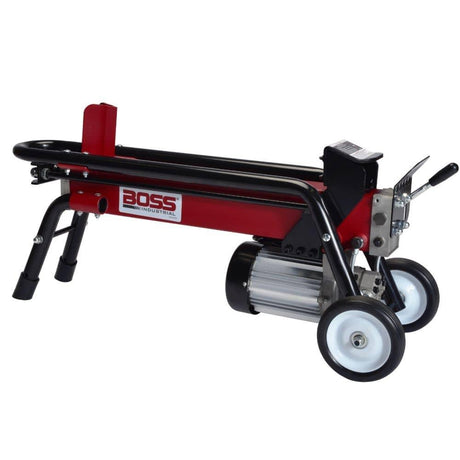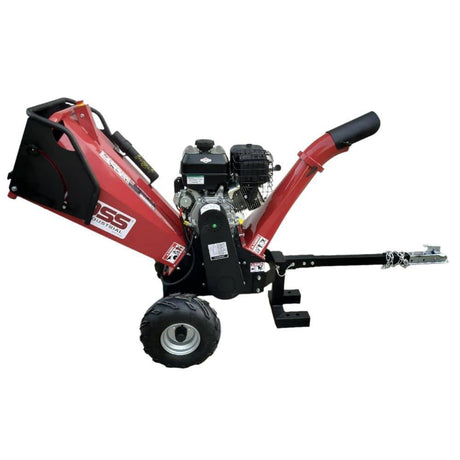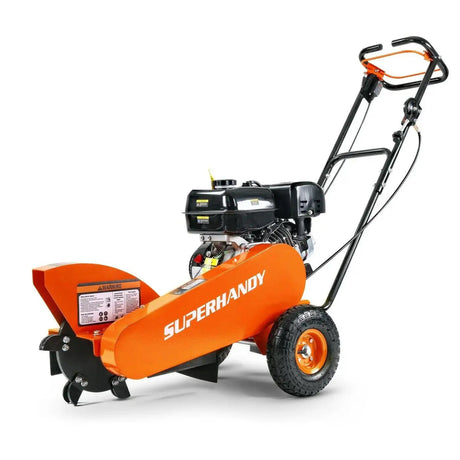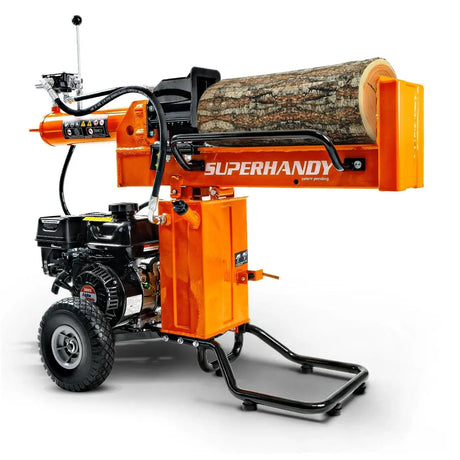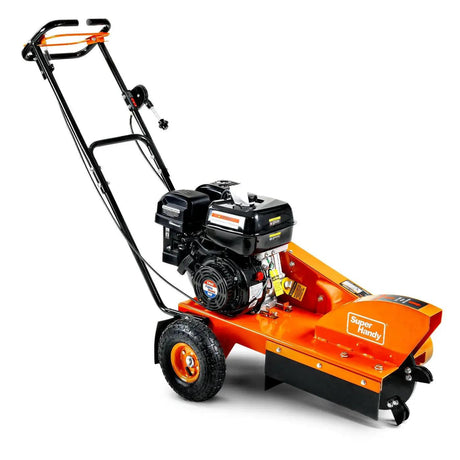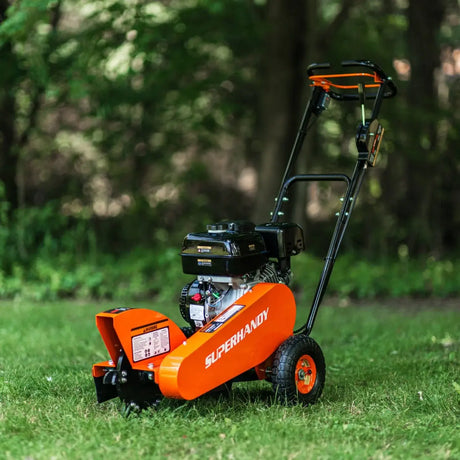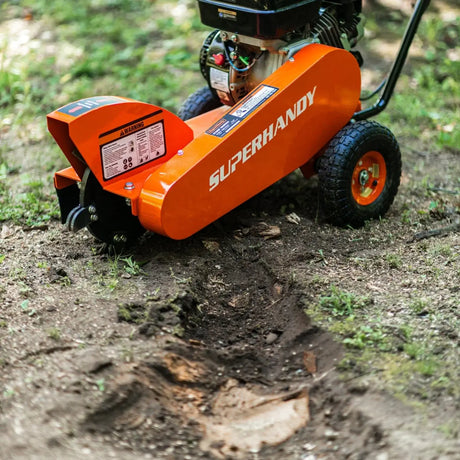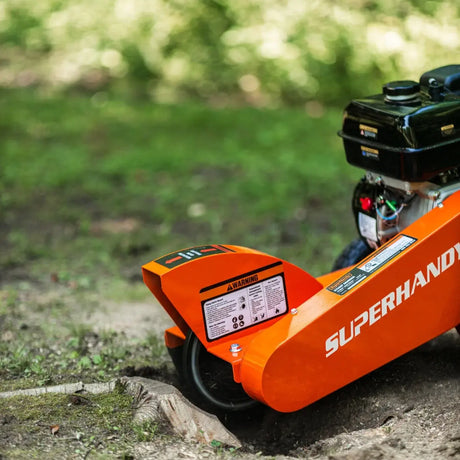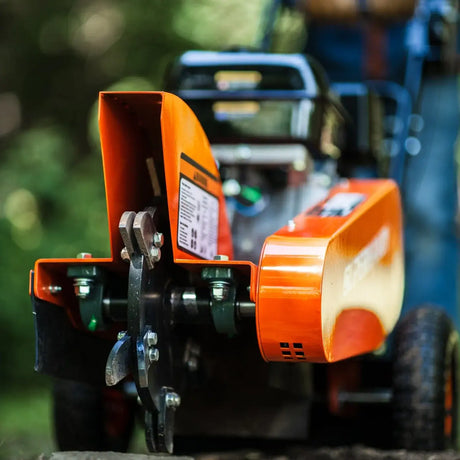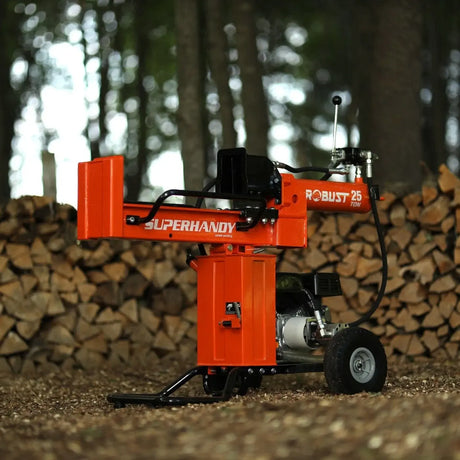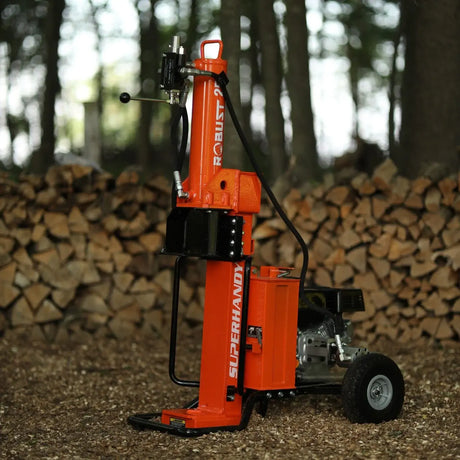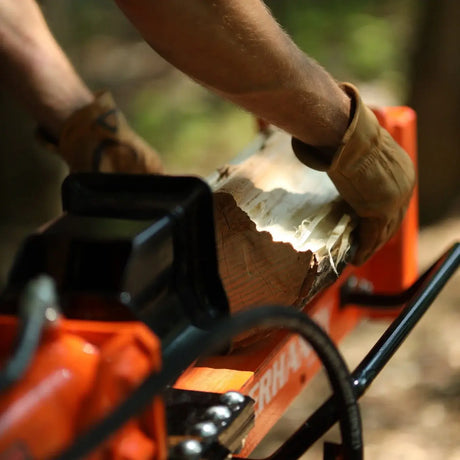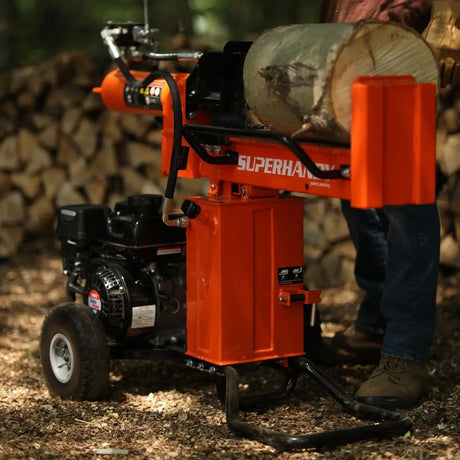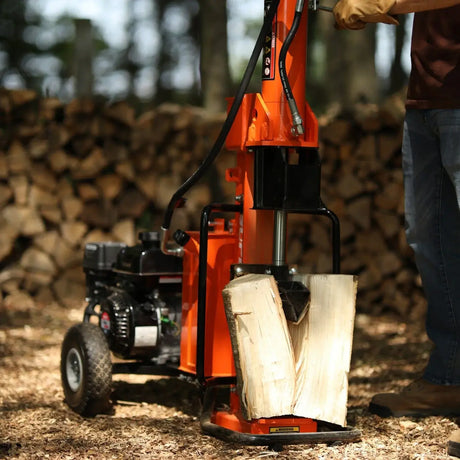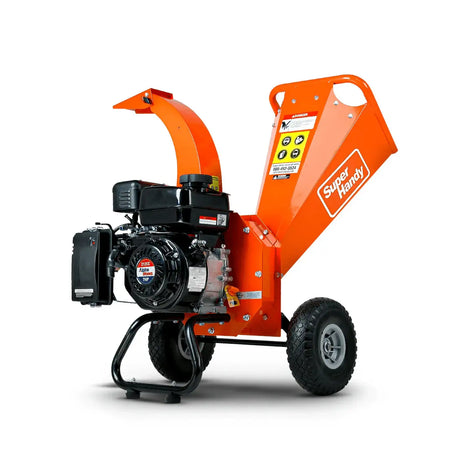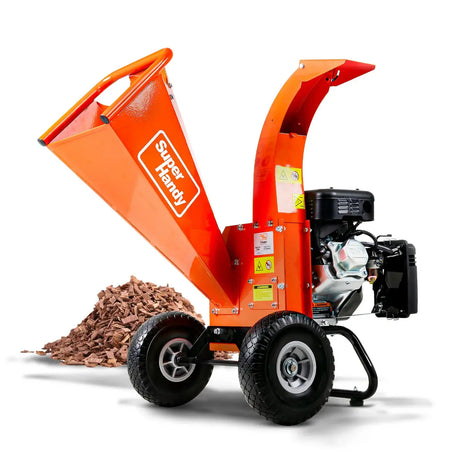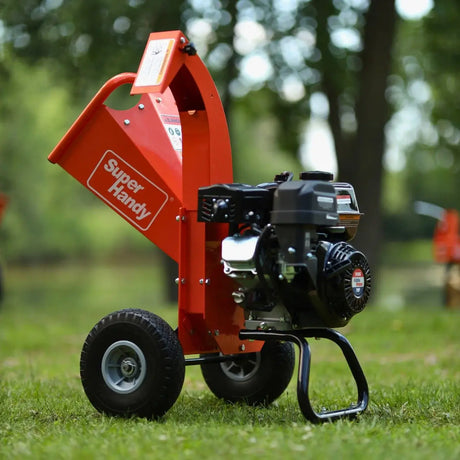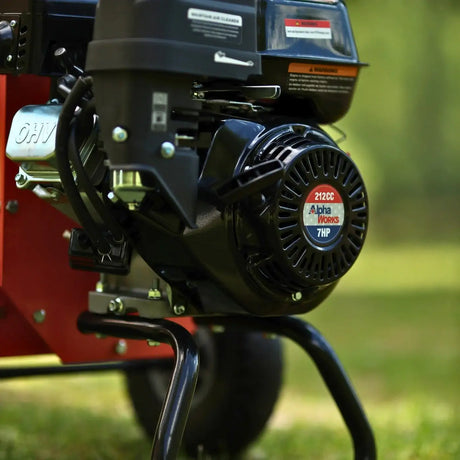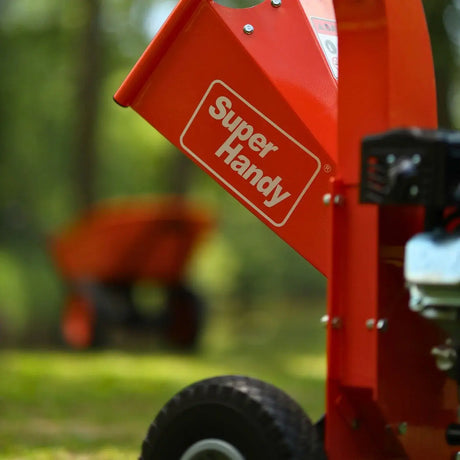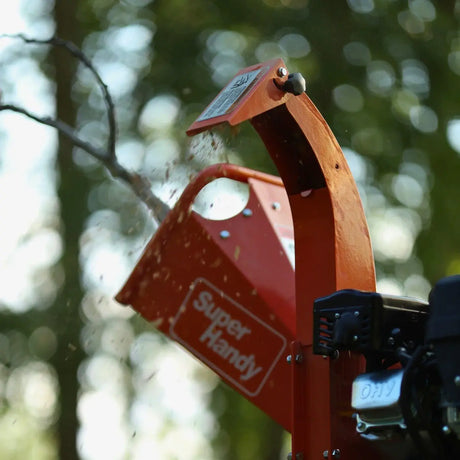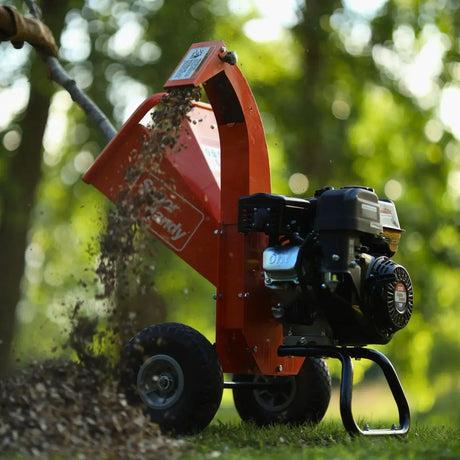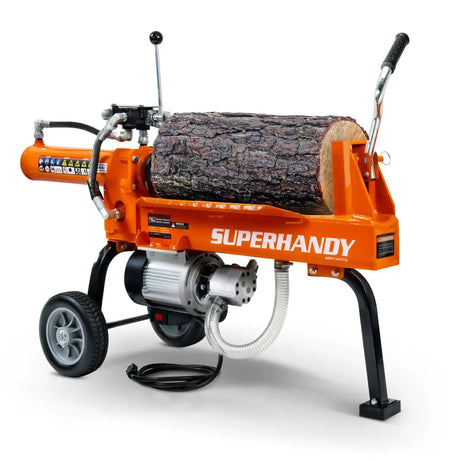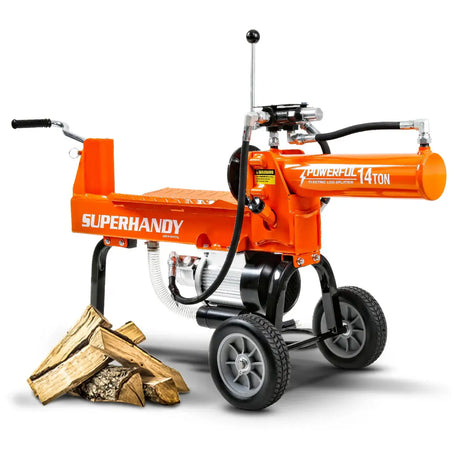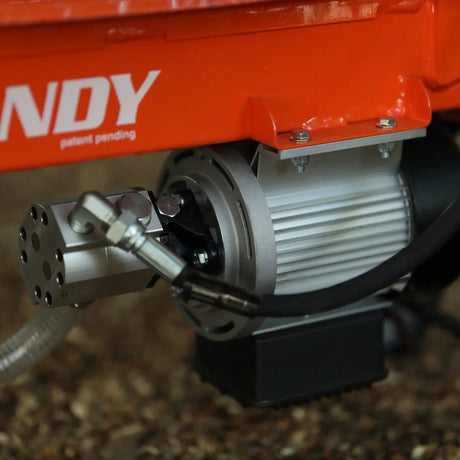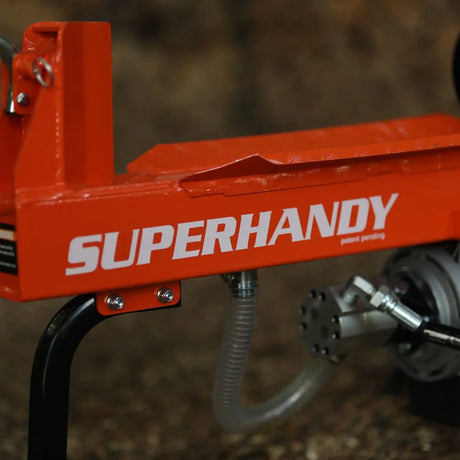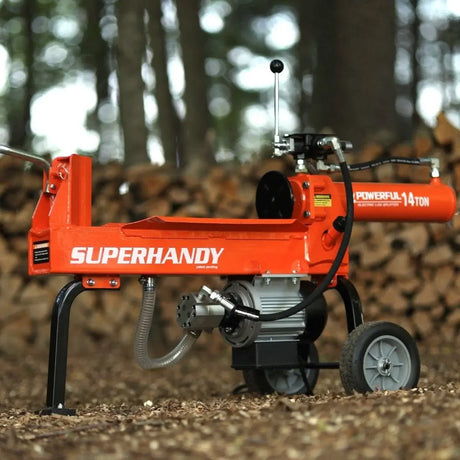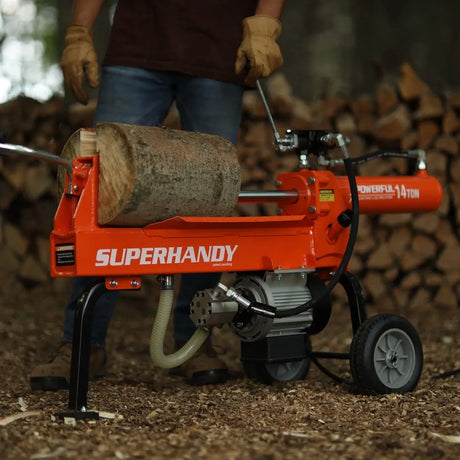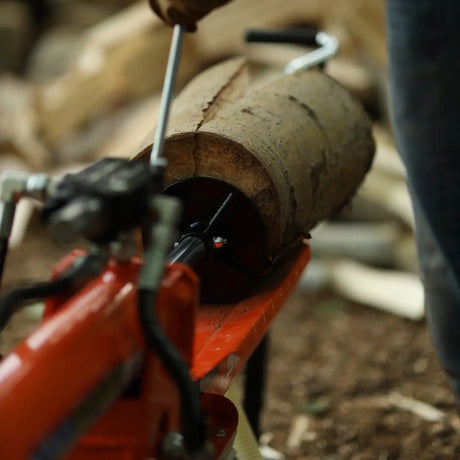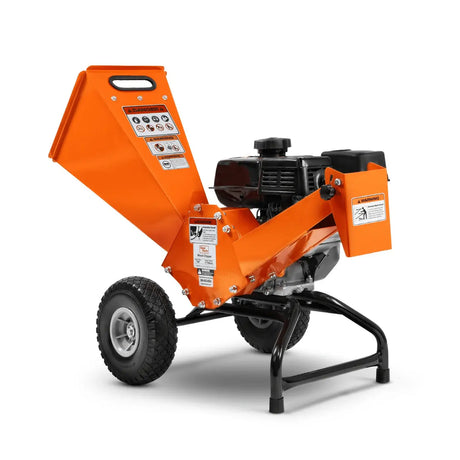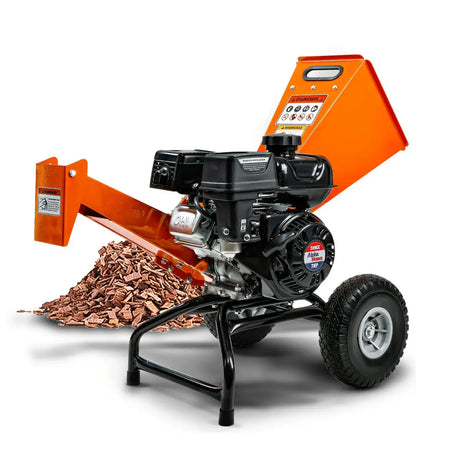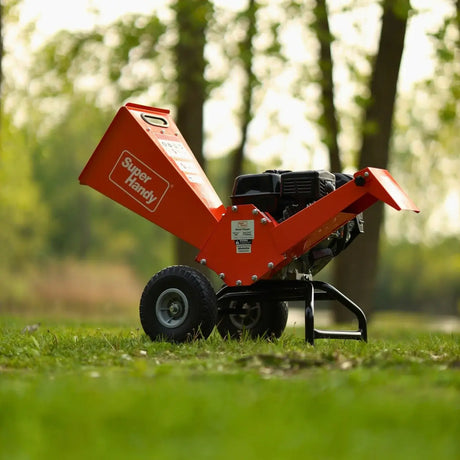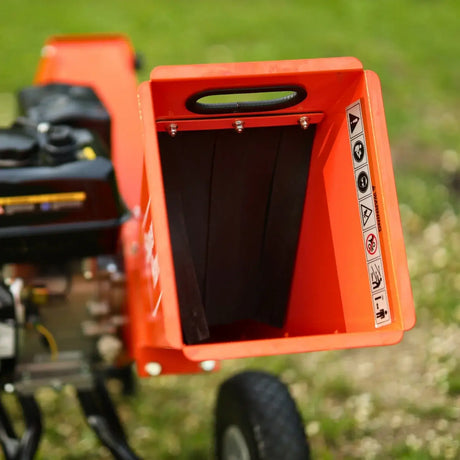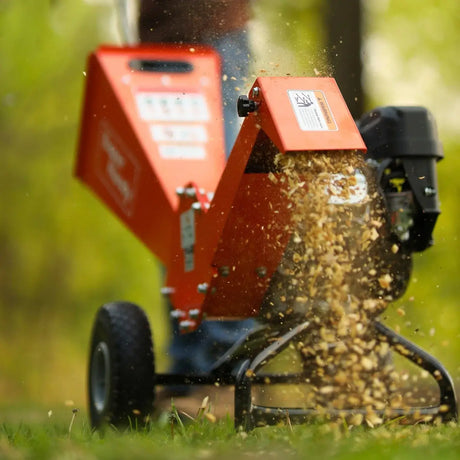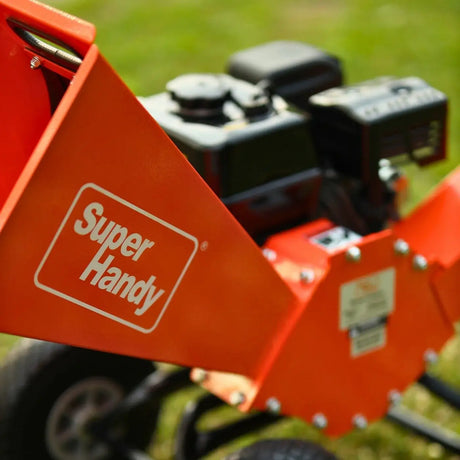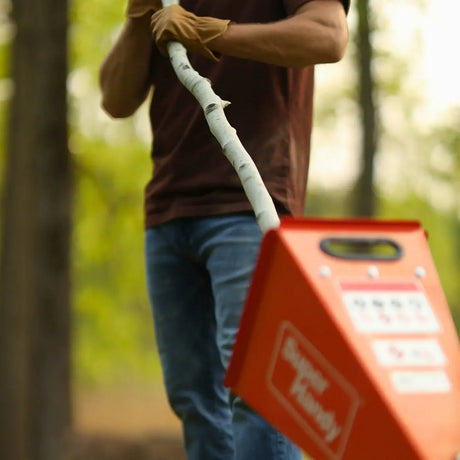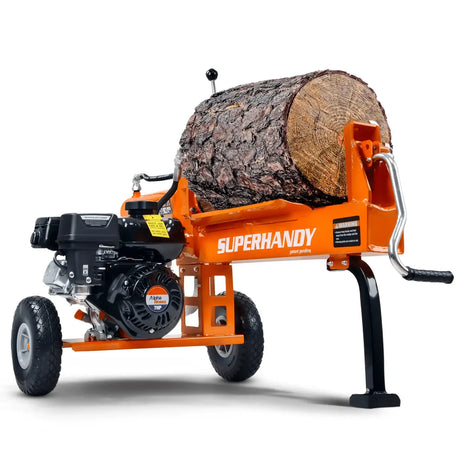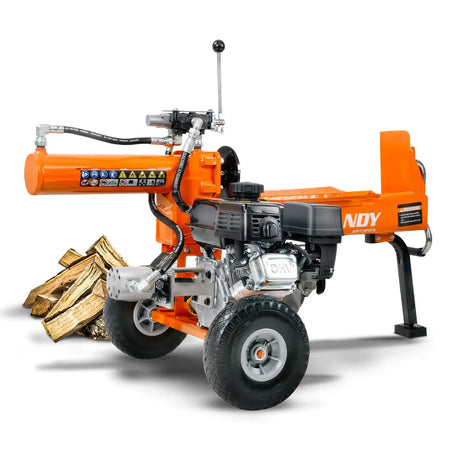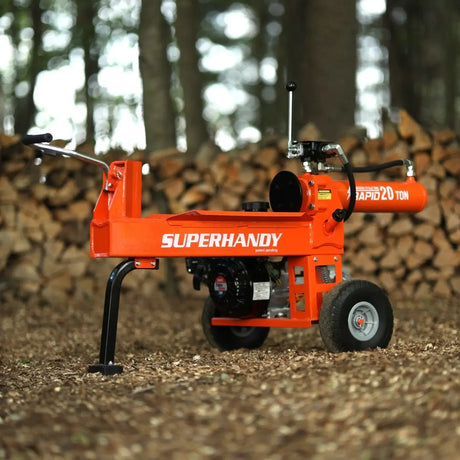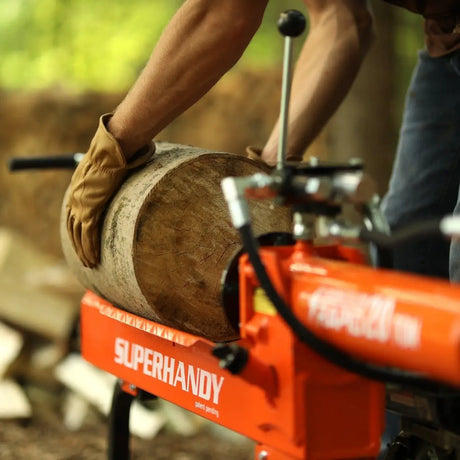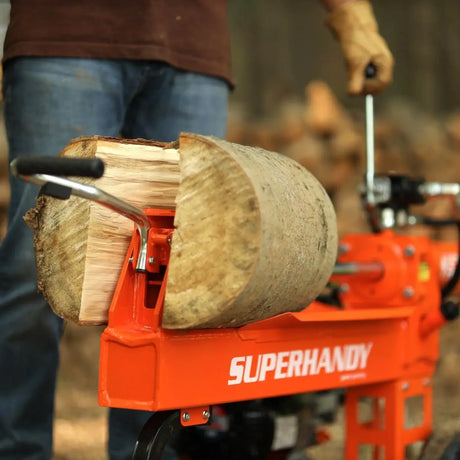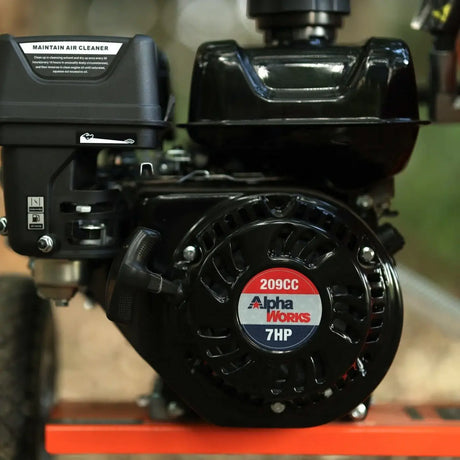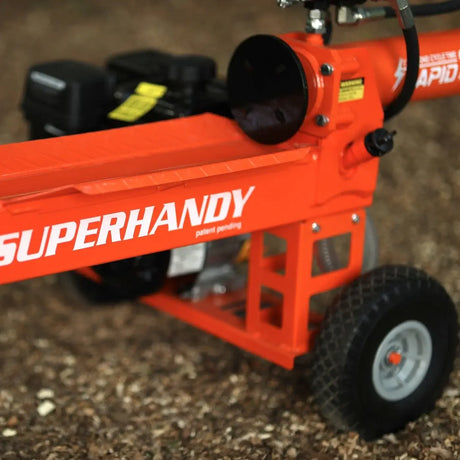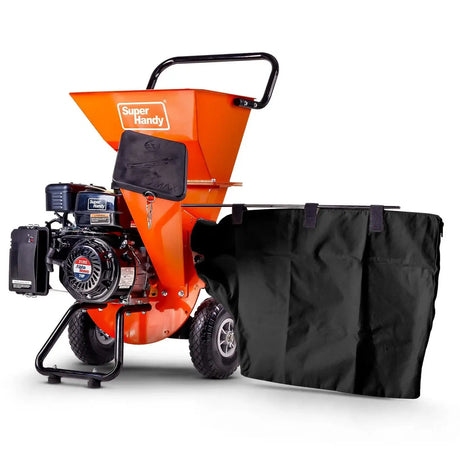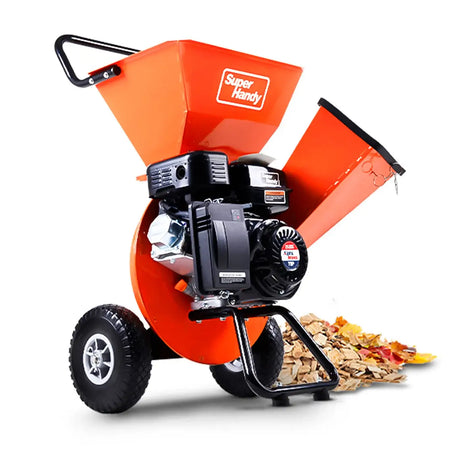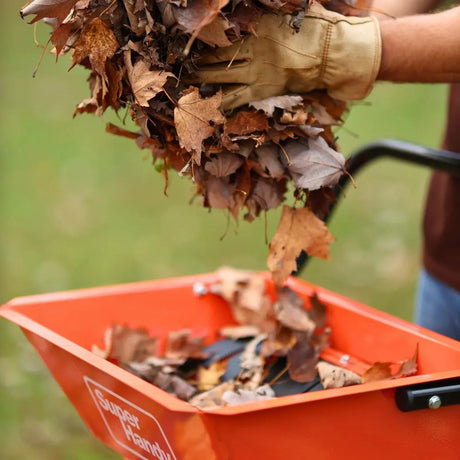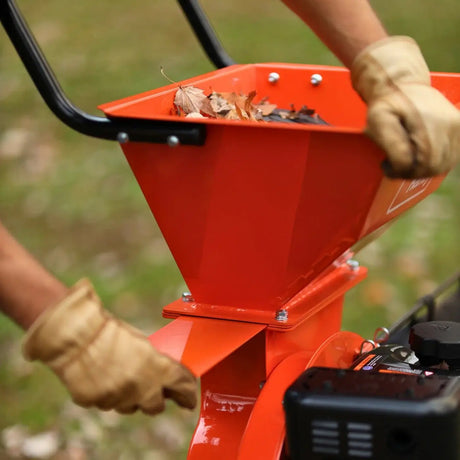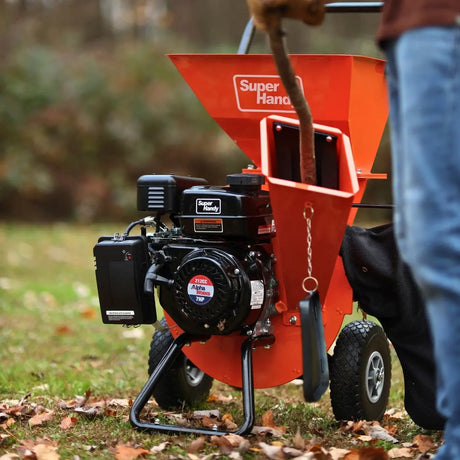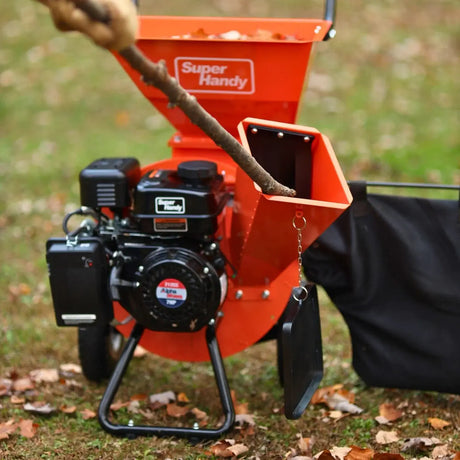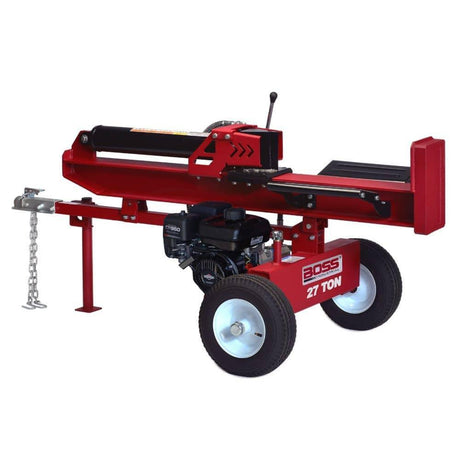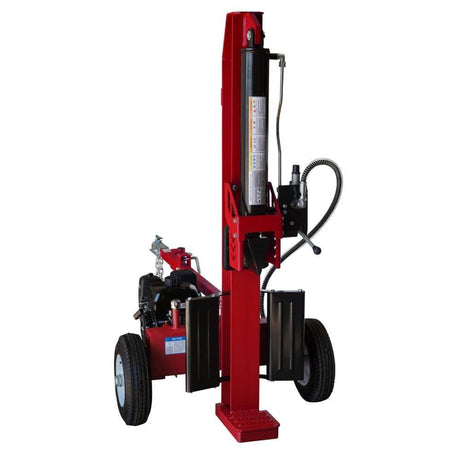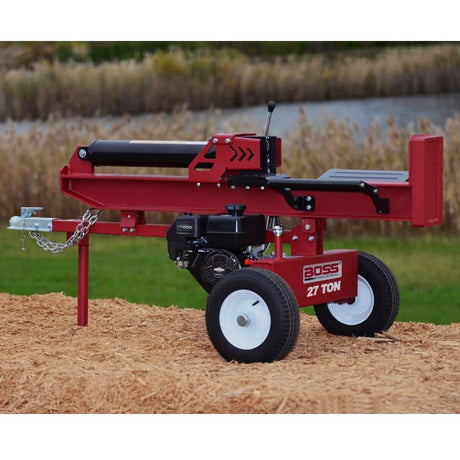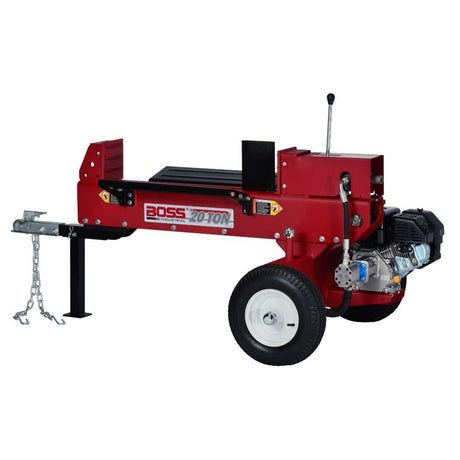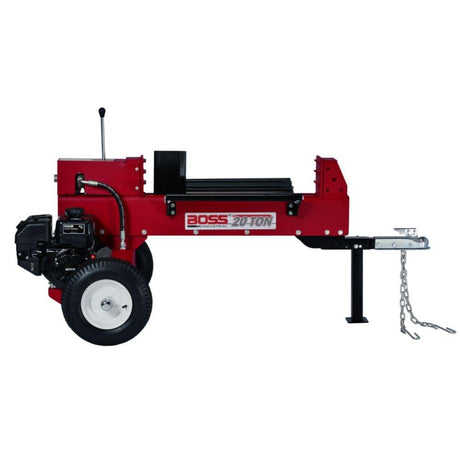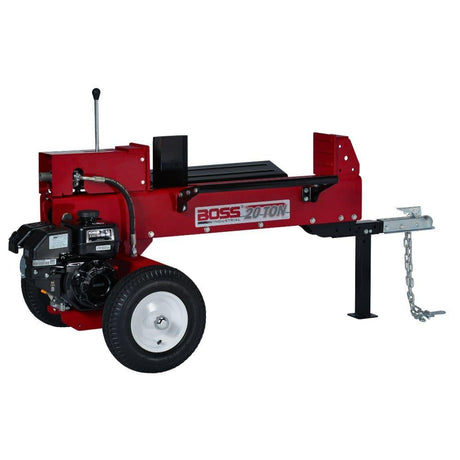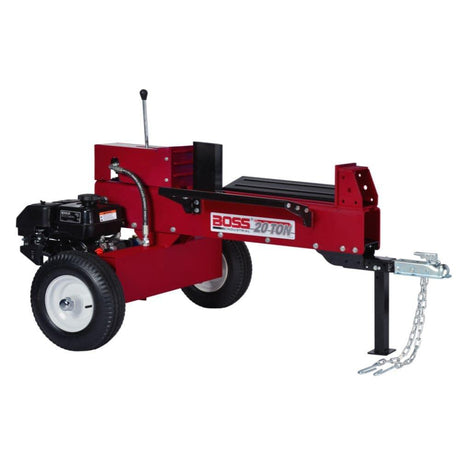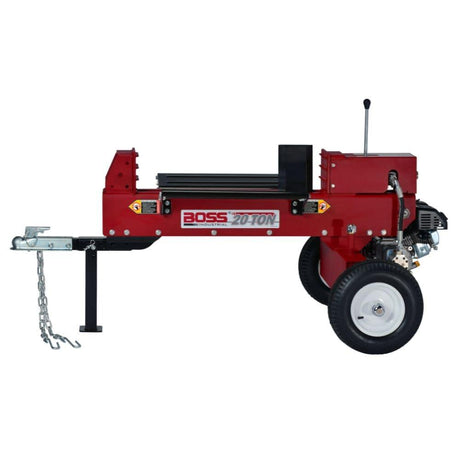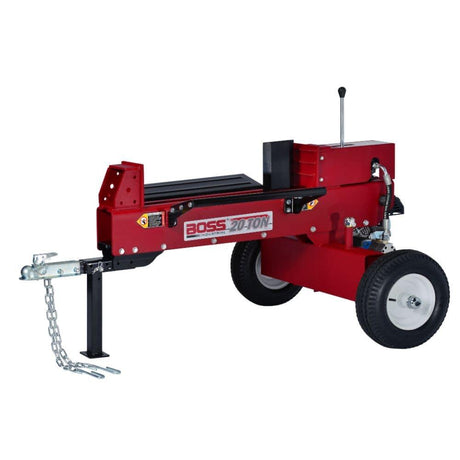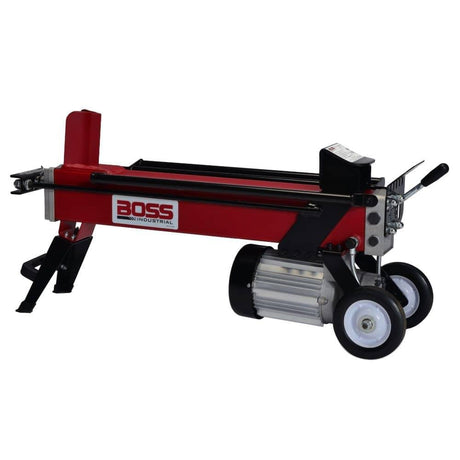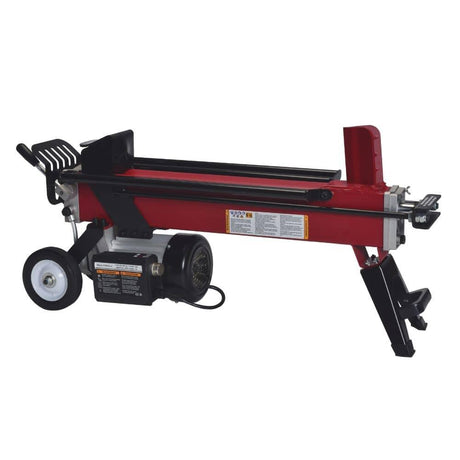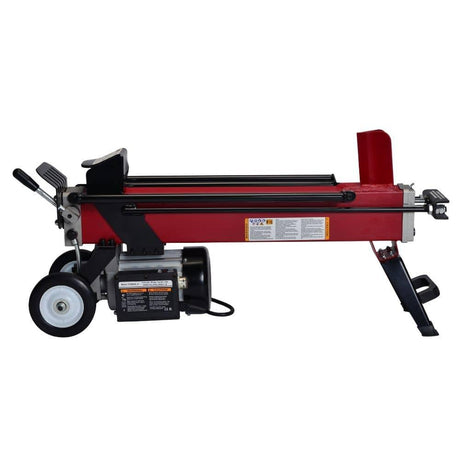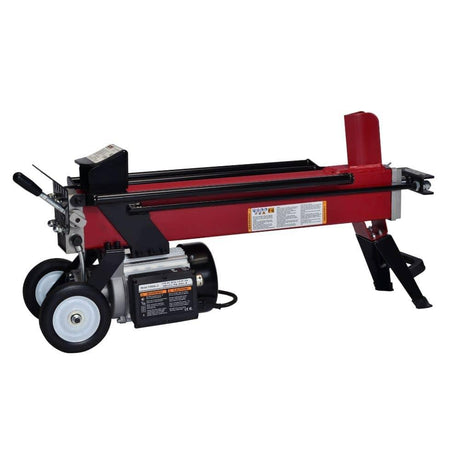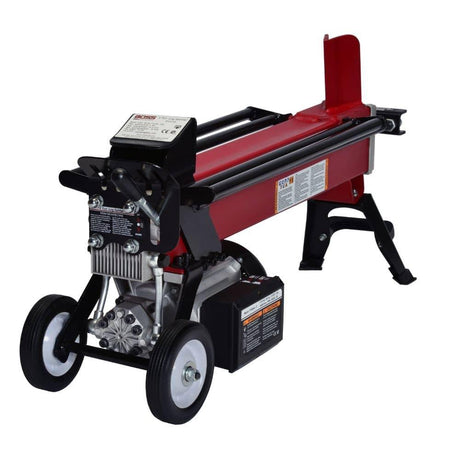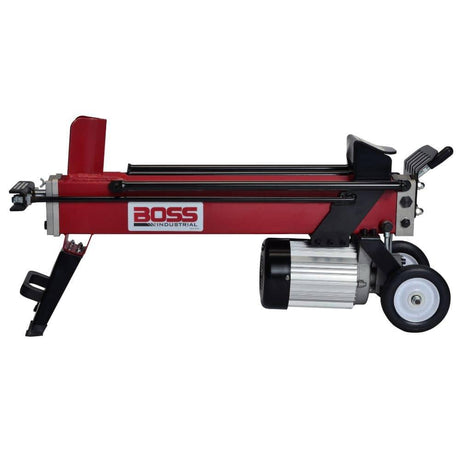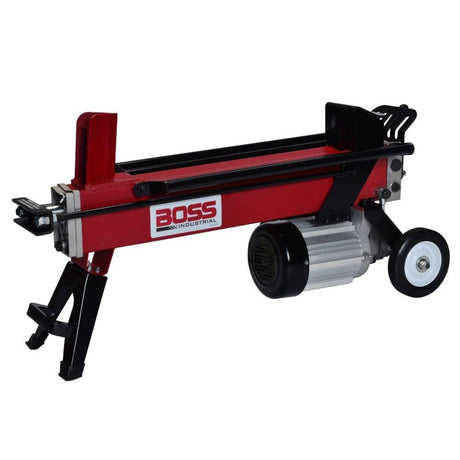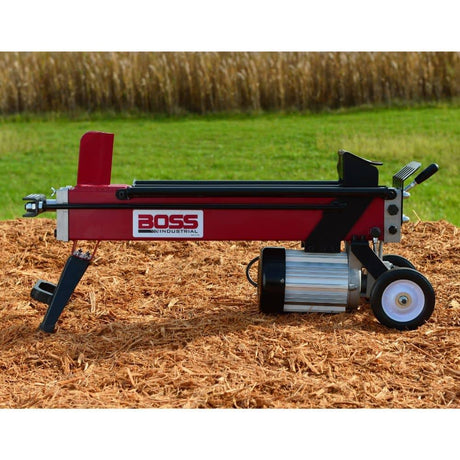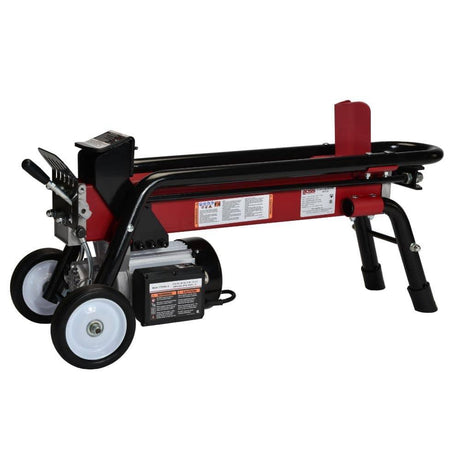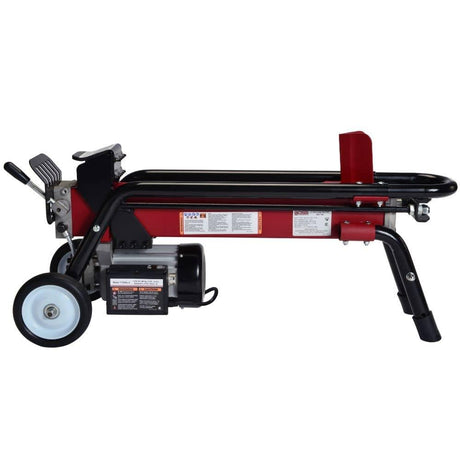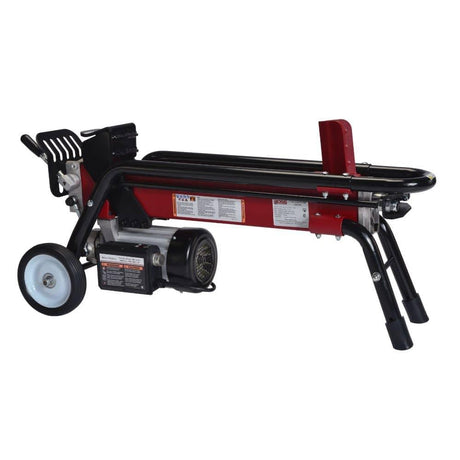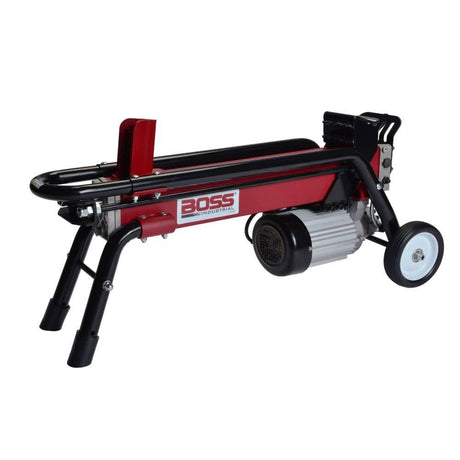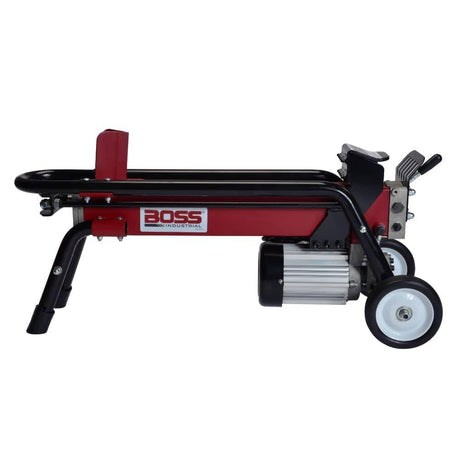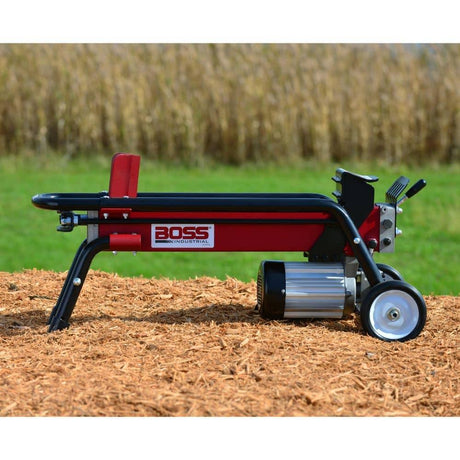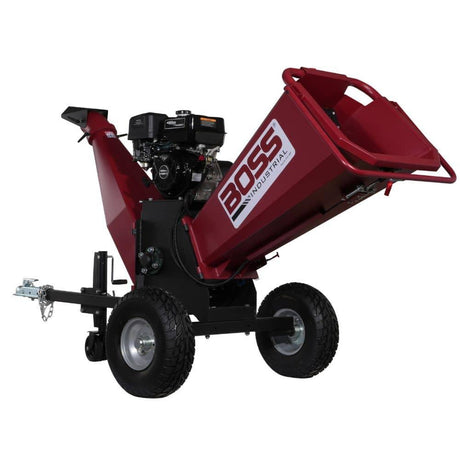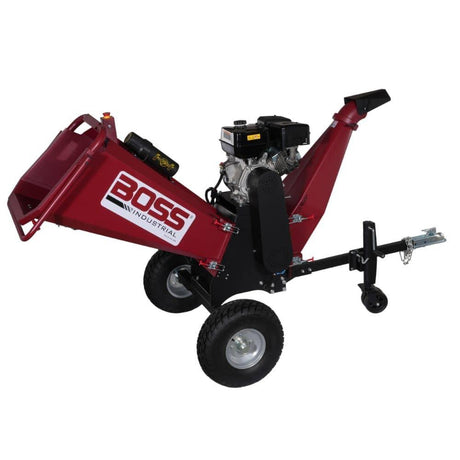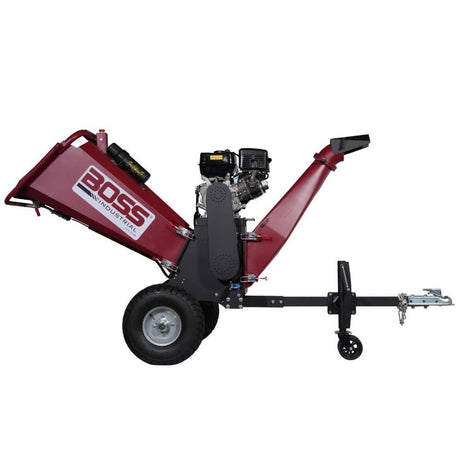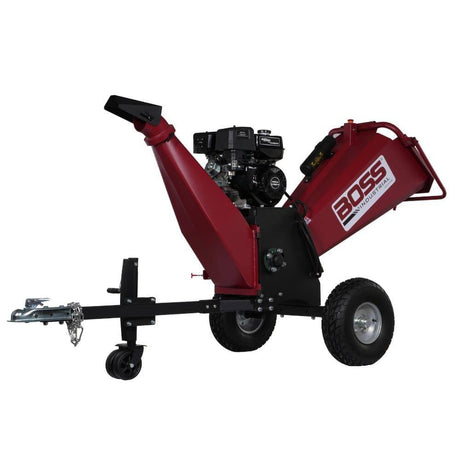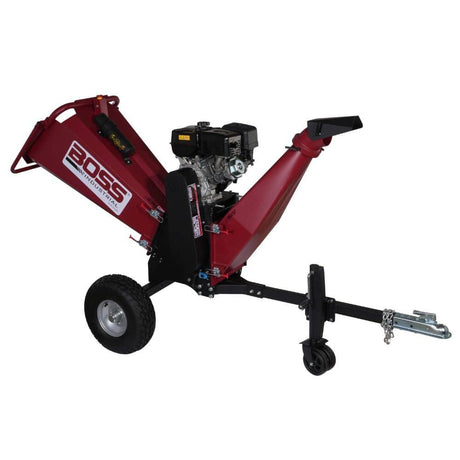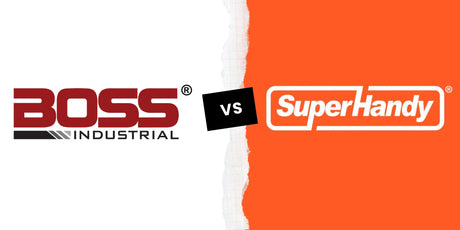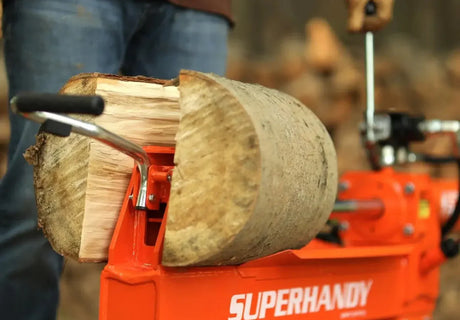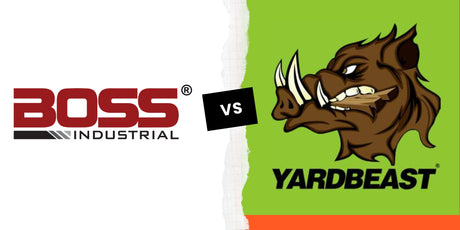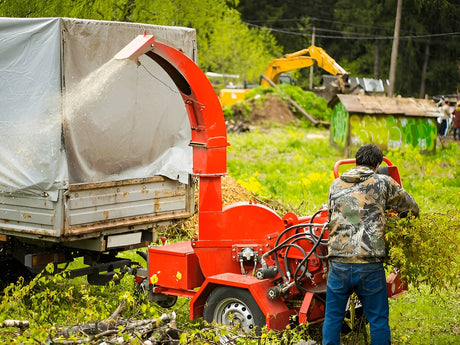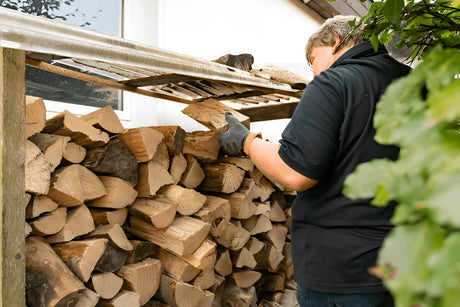Choosing the right log splitter can save you hours of work and hundreds of dollars in fuel, frustration, or repairs. But with electric, gas, manual, hydraulic, kinetic, horizontal, and vertical models out there... it's easy to get overwhelmed.
So let's simplify things.
This guide breaks down exactly which type of log splitter fits each use case-based on log size, workload, ergonomics, and environment. Whether you're splitting weekend firewood or running a side business, this chart-driven breakdown will help you make the right call.
If you’re curious about the basics, see our Log Splitter 101 for everything you need to know before you buy.
Key Takeaways
- Electric splitters are great for light-duty, indoor-safe work-but not for oversized or knotty logs.
- Gas models offer the most power and flexibility-best for rural or high-volume jobs.
- Manual splitters are only practical for small-diameter logs and low-frequency use.
- Hydraulic vs. kinetic matters for speed, power, and ease of maintenance.
- Horizontal vs. vertical setups dramatically affect usability-especially for large rounds or back pain.
Best Log Splitter by Use Case: Gas vs. Electric vs. Manual
This chart shows which power type fits each user scenario-from light residential needs to heavy-duty commercial work.
| Category | Use Case | Electric | Gas | Manual |
|---|---|---|---|---|
| 🏡 Light Residential Use | Backyard fire pits, light use | ✅ | ❌ | ✅ |
| Budget-Conscious Buyer | ✅ | ❌ | ✅ | |
| Occasional Backyard Use | ✅ | ❌ | ✅ | |
| Homeowner Moderate Needs | ✅ | ❌ | ❌ | |
| Quick Jobs / Minimal Setup | ✅ | ✅ | ❌ | |
| 📏 Log Size Requirements | Splitting 6 inch logs | ✅ | ✅ | ✅ |
| Splitting 12 inch logs | ✅ | ✅ | ❌ | |
| Splitting 18 inch logs | ❌ | ✅ | ❌ | |
| Splitting 24 inch logs | ❌ | ✅ | ❌ | |
| 🚚 Portability / Transport Needs | High Portability (e.g., Trailer-Ready) | ❌ | ✅ | ❌ |
| Off-Grid or Remote Use | ❌ | ✅ | ❌ | |
| 🧑🌾 Standard Residential / Regular Use | Mixed log sizes (urban + rural) | ✅ | ✅ | ❌ |
| Heating full home off-grid | ❌ | ✅ | ❌ | |
| Indoor/Garage Splitting | ✅ | ❌ | ❌ | |
| Limited Storage Space | ✅ | ❌ | ❌ | |
| Urban/Suburban Space Constraints | ✅ | ❌ | ❌ | |
| Off-Grid or Remote Use | ❌ | ✅ | ❌ | |
| 🧓 Ergonomic / Accessibility Needs | Older users or bad back | ✅ | ✅ | ❌ |
| Large/Heavy Logs Handling | ❌ | ✅ | ❌ | |
| 🪵 Heavy-Duty / Commercial Use | Frequent Use (Large Logs) | ✅ | ✅ | ❌ |
| Firewood sales / high volume | ❌ | ✅ | ❌ | |
| Splitting Knotty or Green Wood | ❌ | ✅ | ❌ | |
| Splitting Large, Oversized Logs (20+") | ❌ | ✅ | ❌ |
This is your big-picture view. Use it to quickly eliminate the wrong options and zero in on the models that meet your needs-whether you're splitting pine for weekend campfires or processing oak logs for winter heat.
What This Table Shows
This table organizes each splitter type around real-world needs like:
- Log size (6", 12", 18"+)
- Usage style (occasional, frequent, remote)
- Physical ability and space
- Budget level
The point here isn't just what's possible-it's what's practical. For example:
- Yes, a manual splitter can split 6" logs. But do you really want to do that 50 times?
- Electric splitters are clean and quiet, but won't budge a 20" green oak log.
- Gas splitters are powerful, but they're noisy, heavy, and not garage-friendly.
The table helps you match your needs-not just your wallet.
For sizing tips, check out our What Size Log Splitter Do I Need? A Practical Guide for Buyers to match the right model to your logs.
Hydraulic vs. Kinetic: Which Type Should You Choose?
Both hydraulic and kinetic log splitters are powerful-but they work very differently. This chart compares the mechanism, speed, and best-use cases for each type.
| Feature | Hydraulic Log Splitter | Kinetic Log Splitter |
|---|---|---|
| Splitting Mechanism | Hydraulic fluid-driven ram | Flywheel-driven burst force |
| Cycle Time | 12–20 seconds (slower, steady force) | 2–3 seconds (very fast cycle) |
| Splitting Force | High (20–40+ tons) – handles up to 36”+ logs | Quick burst – ideal for logs up to 12–18”, not knotty |
| Ideal Log Size | Best for 12" to 36”+, including green, knotty, or twisted logs | Best for 6" to 18” straight-grain seasoned wood |
| Power Source | Gas or Electric | Usually Electric |
| Maintenance | Requires oil changes, filters, engine upkeep | Minimal – basic cleaning |
| Noise & Emissions | Louder, emits fumes (if gas) | Quiet, fume-free |
| Portability | Heavier, bulkier – often towed | Lightweight and compact |
| Best Use Case | Frequent use, large rounds, firewood sales, mixed wood types | Casual users, backyard use, clean and seasoned firewood |
| Indoor Safe? | ❌ (only if electric and well-ventilated) | ✅ (Electric models only) |
| Price Range | $$–$$$$ (starts ~$1,000+) | $–$$$ (starts ~$700) |
Summary:
- Hydraulic models are your go-to for dense, knotty, or oversized logs-especially when consistency matters.
- Kinetic models are lightning fast and great for clean, dry wood under 18". Think: backyard firewood, not twisted eucalyptus.
If you're processing different species or dealing with irregular rounds, stick with hydraulic. But if speed and simplicity are your priority, a kinetic model might win.
Horizontal vs. Vertical vs. Dual-Mode Splitters
Positioning matters more than most people think. This chart compares how the orientation of your splitter affects usability, speed, and versatility.
| Feature | Horizontal Splitter | Vertical Splitter | Dual-Mode Splitter |
|---|---|---|---|
| Ideal Log Size | Up to 18" ✅ | 20"+ ✅ | All sizes ✅ |
| Ease of Use | ❌ Requires lifting | ✅ No lifting – roll logs | ✅ Best of both |
| Fast Cycle Speed | ✅ Yes, fast for small logs | ❌ Slower (log repositioning) | ⚠️ Depends on mode |
| Back-Friendly | ❌ Only for light logs | ✅ No lifting | ✅ Adjustable based on log size |
| Portability | ✅ Lightweight | ❌ Bulky | ⚠️ Heavier but mobile in horizontal mode |
| Compact Storage | ✅ Compact | ❌ Bulky | ❌ Larger footprint |
| Electric Option | ✅ Available | ⚠️ Rare | ⚠️ Some models |
| Gas Option | ✅ Available | ✅ Common | ✅ Common |
| Indoor Use (Electric) | ✅ Safe (electric only) | ❌ Unsafe unless electric + ventilated | ⚠️ Depends on motor |
| Homeowners Use | ✅ Great choice | ❌ Overkill unless large logs | ✅ Flexible |
| Rural / Firewood Pro | ❌ Underpowered for heavy jobs | ✅ Ideal for big rounds | ✅ Handles both small and large jobs |
| Price Range | ✅ $300–$3,000+ | ⚠️ $1,000+ | ⚠️ $1,200–$4,000+ |
Summary:
- Horizontal splitters are great for logs under 18" and fast-paced work-but require lifting.
- Vertical splitters save your back on large rounds, but are slower and more awkward for small logs.
- Dual-mode models give you the best of both worlds, especially if you're handling a mix of wood sizes.
If you're working alone with big rounds, vertical or dual-mode is a game changer.
How to Use This Data in Real Life
1. For Homeowners with Light Needs
- Choose electric or manual splitters.
- Stick to horizontal-only unless lifting is a problem.
- Logs under 12"? No need for gas or kinetic.
2. For Rural or Off-Grid Properties
- Go gas-powered-you'll need the force.
- Use vertical or dual-mode to handle oversized rounds.
- Avoid kinetic unless the wood is dry and straight-grained.
3. For Firewood Businesses
- Choose a hydraulic, gas-powered splitter with dual-mode.
- Target at least 25-35 tons of splitting force.
- Prioritize cycle time and durability-splitting thousands of logs a month demands it.
4. For Older Users or Those with Back Issues
- Go electric for quiet, clean operation.
- Use vertical or dual-mode to avoid lifting.
- Don't mess with manual splitters-they're harder than they look.
To keep your splitter running smoothly, follow our Log Splitter Maintenance Checklist by Hours of Use for pro tips on upkeep.
Final Thoughts
Not all log splitters are created equal-and the best one for you depends on how much wood you're splitting, where you're doing it, and what kind of logs you're working with.
Use these tables as your cheat sheet. They'll save you time, money, and effort whether you're buying your first splitter or upgrading your setup.
👉 Ready to explore top-rated splitters? Browse our full collection of gas & electric log splitters here →

![What Log Splitter You Need Based on Use Case [2025 Chart]](http://protreesupplies.com/cdn/shop/articles/Ideal_Log_Splitter_per_Use_Case_1.png?v=1753351710&width=1600)
